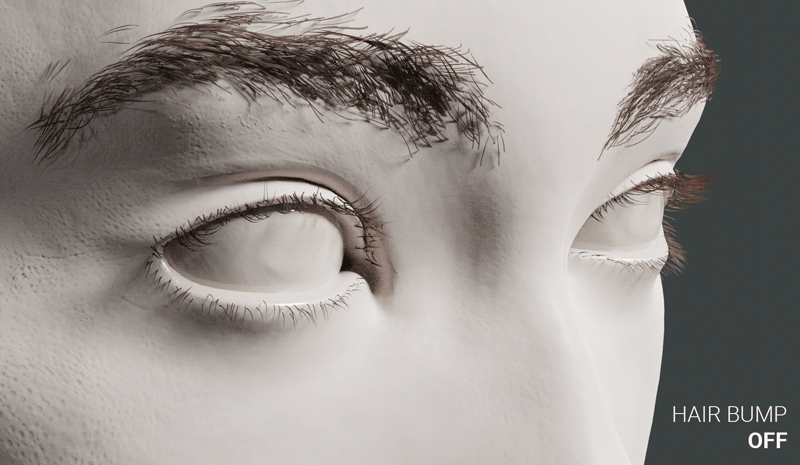@TheAsianGuy_LOL Thank you, I’m glad you like it!
I’ve repeatedly flirted with the idea of doing short videos showing obscure tricks, but clear, concise tutorials take way more time to produce than it looks like. I feel such time would be better invested learning and creating things. Maybe in the future? For now I hope my mistakes and little snippets are helpful enough. 
@bstaub Thanks! They’re transferred from a previous version, so they’re partially sliding off her face. I actually revamped the eyelashes between post #3 and #4 to do the hair bump test and I’ll do another pass later, but didn’t touch the eyebrows yet.
The eyebrows use the basic thicker + thinner particle hair combo, and a slightly different shader setup with mixed diffuse to make them more matte.
One change 2.8 brought to my workflow is using Annotations to plan eyebrows and hairlines.
Saves a lot of time!
@Spaceboy64 Thanks for the thoughtful feedback, you’re spot on!
It’s weird to be called “experienced”. I’m not sure if I have earned this right yet, just wait to see the glaring omissions in my 3d knowledge. 
About the skin shader, rest assured I’m rebuilding it from scratch. This is a test pass to figure the best way to apply skin scans, etc. There’s not really a roughness map for it now, it’s derived from the height map.
You’re absolutely right about the vellus hair, I did use a higher than average amount trying to understand what’s wrong with its shader. It gets either too opaque, too noisy or velvet-ish due the offset. While the velvet-like version is the best so far (it’s the one in the render), it’s still bad.
This is evident on the chin:
I’d love some tips if you have any!
My intended skin roadmap is:
- Finish node setup of base skin tone picker.
- Sculpt wrinkles for baking (I hated the painted-on wrinkles!).
- Interlude for topology changes, leading to UV changes. May switch from single UV to UDIMs too.
- Paint new maps. New albedo with independent flush maps etc; new height map; new normal… new everything! Plus missing maps like actual roughness and SSS.
In the meanwhile, a tiny update in preparation for the shaders overhaul.
She has caruncles now! I just snapped them to the faces of the surrounding geometry at the moment, but sooner or later I’ll have to figure whether I should merge them to the body mesh (sharing edges) or keep them detached, like eyeballs.
My first instinct is to merge every edge loop I can, building solid meshes, but I don’t think it’ll be a good idea here. Caruncles are a fold of tissue connected only to the inner corner of the eye, being independent from upper and lower eyelids. I feel that trying to make it part of the body mesh would make animating hell. What do you think?
- Connect caruncles to body
- Keep detached
- Other
Also, new eyeballs. The previous setup had a cornea mesh over an sclera+iris eyeball, forcing me to go out of the way to keep the cornea from casting shadows on the sclera. I’ll be trying a cornea (lens, actually) + sclera mesh and separate irises this time—and reverting to the classic setup for game engine exports shouldn’t too hard.
This was the perfect opportunity to reshape the lens as well. I was too afraid of deviating from a sphere the first time! I’ll sculpt some irises this weekend if life doesn’t get in the way.
![]()


